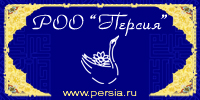Oriental Collection № 2/2014
 |
The Sahara, a photo essay by Galina Mironova opens the second issue of 2014.
- Valentin Osipov. Fyodorov the Hermit: thoughts about India. Works by Nikolai Fyodorov, the ingenious philosopher, one of the representatives of Russian cosmism, contain a lot of interesting thoughts about the role of India in the history of humankind. Many of his records are still relevant today.
- Gyultekin Shamilli. The scattered atoms of lost time. Senior scientist of the Joint Institute for Nuclear Research in Dubna, Bijan Saha is also known as a fine master of photography. He is the author of numerous works dedicated to the small village Tara in Bangladesh, the place he was born in. The magazine publishes a selection of his photographs.
- Irina Vinokurova. On the Hills of Galilee. On the shores of Lake Galilee almost the whole Bible history is deployed. With the lapse of time numerous temples named in the memory of the events of that time, have arisen around it. The author of the essay narrates about what she had seen during her journey around Kinneret as the lake is called in Israel.
- Natalia Gozheva. The Miraculous Ashoka Relic. In the countries of Indochina the Buddhist stupa embodied not only the features of the dominant Buddhist doctrine Theravada but also the cultural commonality of the people in the region. Based on the collected rich material, the author tells about the history, purpose and meaning of this significant construction in Buddhist architecture, gives classification of stupas on the entirety of characteristics.
- Maria Toropygina. 36 Japanese geniuses at the poetry tournament. The illustrated album representing an anthology «New 36 geniuses of Japanese poetry» can be found in the Department of manuscripts of the Russian State Library. It contains poems and portraits of the 12—13th century poets. The material in the album is set on the principle of poetry tournament.
- Kira Vyazovikina. The Relics of Ancient China in Moscow. In the spring of 2014 the State Pushkin Museum of Fine Arts gave an exhibition on items from the collection of the Museum of Hubei Province. For the first time more than a hundred artefacts of Chinese artistic culture of the Bronze Age was shown to the Russian public. They included items made of bronze and lacquer and musical instruments. Some of them the author of the article tells about. Historical review by Han Fang and Zeng Pan «The Finds of the Bronze Age» as well as comments by Mark Ulyanov are also dedicated to this topic.
- Alexey Ivanov, Bikku Rathod. Banjara Paradox. One of the tribes living in the Indian state of Andhra Pradesh bears the name Banjara. Only this state has a population of more than 1.6 million people. Gypsy Banjara, as they are also called, is one of the most colourful tribes. The article is supplemented with the extract from the essay by French writer Louis Jacolliot «Le Periah dans L̀’Humanite» (1876).
- Maxim Mikhalyov. Zone where the White Wolfs inhabit. The essay of the Russian ethnographer, a PhD student at one of the universities in China who found himself in the contact zone of several cultural, civilization and ethnic worlds abounds with adventures. In the lost mountain area of the Chinese province Sichuan he tended to find the Pumi ethnic minority group that has been known in China since ancient times under the name of White Wolfs. He did succeed but not completely...
- Zilya Davletshina. Bashkir buy-balas. Striped napless carpets buy-balas, woven from wool on wooden looms, had been used for centuries in daily life of Bashkirs. However the art of carpet weaving has not gone along with a nomadic way of life. At the recent festival of carpets in Bashkortostan more than a hundred ingenious works of authorship by the Republic’s female carpet-makers was being demonstrated.
- Katerina Karavaeva. Javan Venice. Semarang in Indonesian Java is the city that in most respects is not Javan, with its big China town and the traces of Dutch reign. This city is being discussed in the essay.
- Yuriy Zinin. Turban at all times. In ancient times Arab men befitted to wrap their head with a piece of cloth. Thus a turban was born which with the advent of Islam was given religious status. Adapting to the changing realities of life, turban has reached our days and exists in Muslim world under different names and in various variants.
- Marina Bakanova. Rural Punjab. The cities of Pakistani province Punjab, preserving in their appearance the heritage of many centuries, change their image relatively quickly. In a village vice versa history, culture, customs and traditions are being kept longer and more fully. The author describes in detail a daily reality of Punjabi villages.
- Elizaveta Malinina. The Art begotten by Silence. The magazine presents a book of its longtime author Elizaveta Malinina. According to her, the writing of the book was caused by the overwhelming desire to tell the reader about the beauty of at least some components of the world of Zen art, about the great spiritual strength enclosed in it. An extract from the book is published.
Our «Orientnet» section presents web resources on Zen-Buddhism.
Translated by Natalia Mishan.






